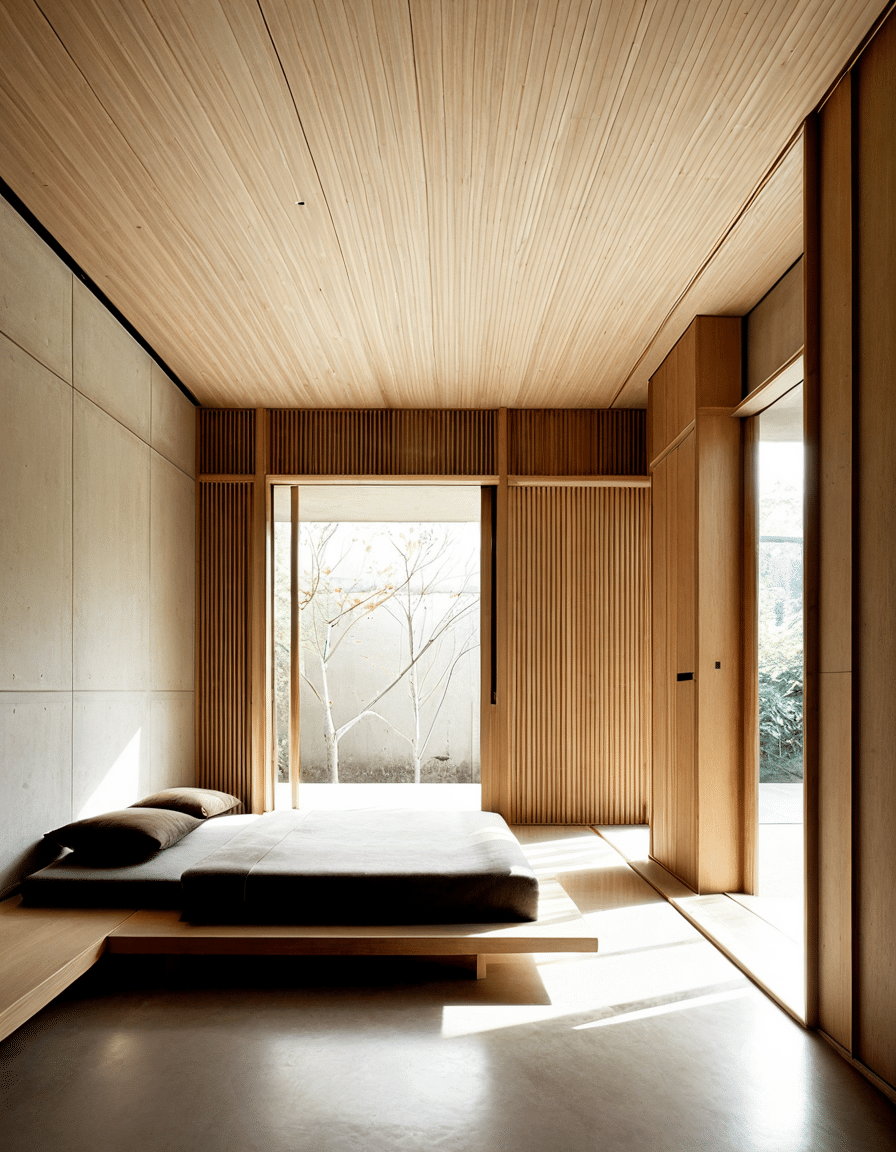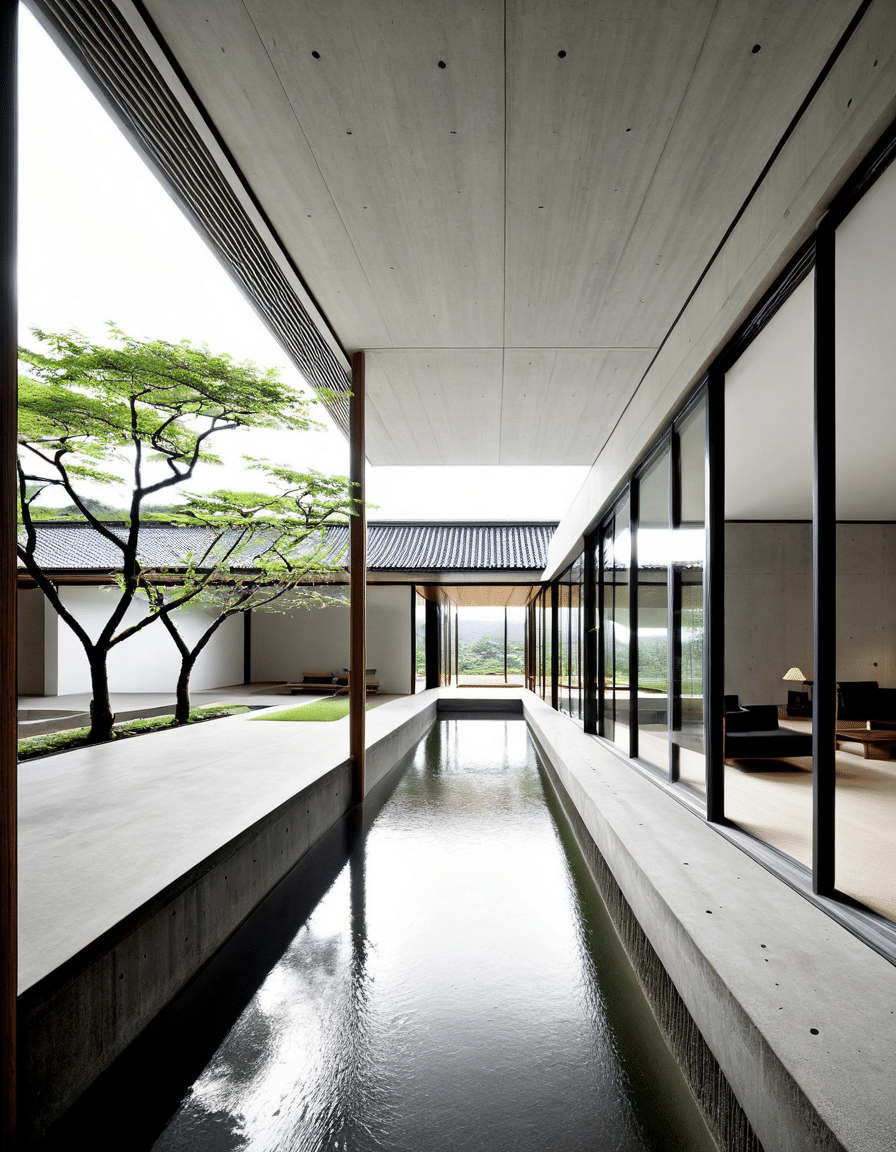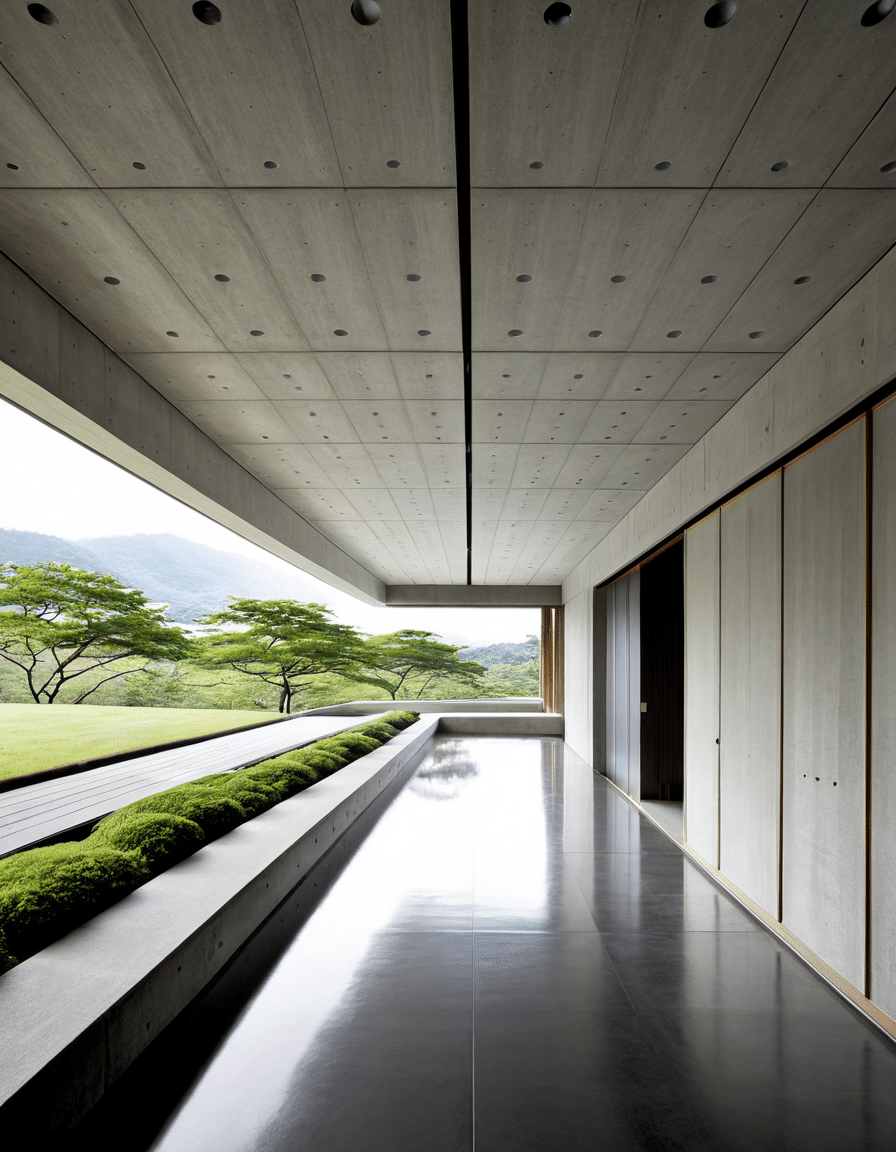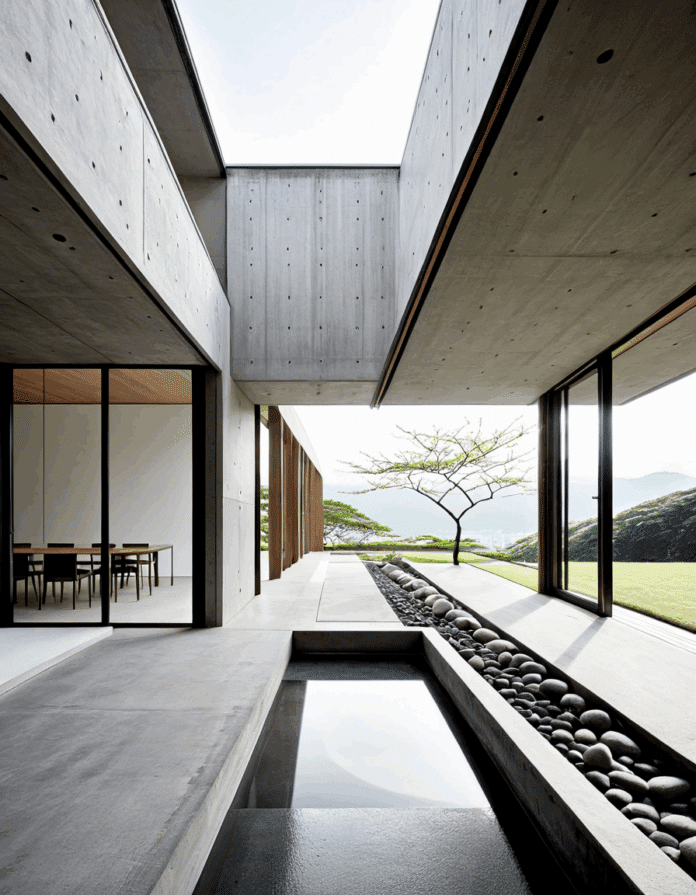Tadao Ando has made waves in the world of architecture with his minimalist approach. Born in Osaka, Japan, Ando is not just an architect; he is a creator of spaces that breathe life, light, and tranquility into everyday living. His buildings transcend typical structural designs, focusing on an experience that connects people deeply with nature and their surroundings. In this article, we’ll delve into seven defining characteristics of Tadao Ando’s architectural philosophy, the impact he’s had on contemporary architects, and how his visionary designs are shaping the future of architecture.
7 Defining Characteristics of Tadao Ando’s Architectural Philosophy
1. Embrace of Natural Light
Tadao Ando remarkably integrates natural light into his designs. By incorporating large windows and well-placed openings, he allows sunlight to illuminate spaces, creating a lively atmosphere. Take the Church of the Light in Ibaraki, for example, where a cross-shaped opening lets in light, flooding the interior with an ethereal glow. Ando’s commitment to natural light symbolizes his belief in architecture as an experience, making the mundane feel extraordinary.
2. Fusion with Nature
Ando thinks architecture should coexist with its surroundings seamlessly. The Water Temple on Awaji Island is a prime example, where he blends structure with water and land. This design doesn’t just sit on the landscape; it participates in it. Ando’s buildings appear to emerge naturally from the earth, promoting peace, unity, and harmony with nature, helping us reflect on our relationship with the environment.
3. Material Selection and Texture
One of Ando’s trademarks is his use of raw concrete, known for its smooth finish and strength, which communicates a sense of simplicity and purity. He often pairs concrete with natural materials like wood and glass. His Modern Art Museum of Fort Worth is a perfect illustration; it elegantly combines concrete with tranquil water features, fostering a dialogue between various textures. The tactile quality of his materials adds warmth and depth to the minimalist aesthetic, inviting people to connect.
4. Spatial Awareness
Spatial relationships are crucial to understanding Ando’s work. He cleverly manipulates volumes and voids, allowing them to guide people’s movements and experiences. The Row House in Osaka exemplifies this principle or, as some might say, showcases spatial choreography. It’s a clever design that maximizes space while ensuring a sense of openness, illustrating Ando’s belief that architectural interaction should elicit genuine experiences.
5. Cultural Sensitivity
Ando respects and incorporates the cultural context of each project. His designs often reference traditional Japanese aesthetics while introducing contemporary features. For instance, the Naoshima Art Island project brilliantly reflects local culture, integrating art within its minimalist approach. This method not only elevates the architecture but also fosters a sense of community, making Ando a dialogue facilitator in his projects.
6. Minimalism as a Principle
For Ando, minimalism isn’t merely a style; it’s an essential philosophy in his architecture. His commitment to restraint and clarity can be seen in the 4×4 House, where the unembellished design draws attention to life’s basic elements. This minimalistic approach encourages occupants to lead a more contemplative lifestyle, steering them toward an appreciation for simplicity and quality of life.
7. Sustainable Practices
With growing concerns for the environment, Ando has begun incorporating sustainable practices into his work. He prioritizes buildings that efficiently utilize natural resources and cleverly adapt to weather patterns. Future projects suggest a strong ecological focus, aligning Ando’s legacy with sustainable living practices. His designs inspire architects to create spaces that are not only beautiful but sustainable too.

Tadao Ando’s Influence on Contemporary Architects: Insights from Jim Edmonds and Catherine Corcoran
Tadao Ando’s minimalist style significantly influences modern architects like Jim Edmonds and Catherine Corcoran. Edmonds takes Ando’s principles and applies them to urban environments, creating spaces that are both practical and aesthetically pleasing. His latest urban residential project embodies Ando’s philosophy, featuring spacious layouts that integrate seamlessly with the urban grid, showcasing that simplicity and utility can coexist.
On the other hand, Catherine Corcoran embraces Ando’s ethos of tranquility in her designs. Her projects echo Ando’s mastery of spatial awareness and natural light, marrying his vision with modern energy. Corcoran believes that Ando transcends mere architecture, presenting a way of life for architects to follow in their quest to create nurturing and holistic living spaces.
The Leadership of Pat Monahan in Architectural Innovation
Peering into the world of architectural innovation, Pat Monahan frequently cites Tadao Ando as a primary influence. Monahan’s projects often merge art and architecture, blending Ando’s minimalist ideals with contemporary designs that challenge traditional styles. He demonstrates that embracing Ando’s concepts—such as fluidity and simplicity—can lead to ground-breaking architectural achievements. By breaking free from conventional barriers, Monahan celebrates Ando’s teachings while pushing boundaries.

A Broader Context: The Influence of McDonough and Jim Bridger
Reflecting on Tadao Ando’s impact, figures like William McDonough and Jim Bridger also emerge as voices advocating for sustainable architecture. McDonough emphasizes designs that respect nature, which aligns beautifully with Ando’s principles. Alongside Jim Bridger, known for his regionally inspired designs influenced by Ando’s techniques, discussions surrounding the future of architecture continue to evolve. They envision an environment where beauty, practicality, and eco-friendliness coexist, driven by the sentiments Ando instilled in the profession.
Envisioning the Future of Architecture Inspired by Tadao Ando
As we cast our gaze toward the future, Tadao Ando’s lasting legacy continues to inspire architects aiming to marry minimalism with sustainability and cultural relevance. His talent for evoking emotion through simple yet profound design reminds us that architecture shapes not just structures but the essence of our living experiences. Ando’s work promotes an ongoing dialogue about how architecture can enhance our connection to nature, community, and purpose. Embracing these ideals may well define architecture in 2026 and beyond.
In essence, Tadao Ando isn’t just about building; he’s about the lives we lead and the spaces we inhabit. If you’re looking to invest in a home or property that resonates with these architectural philosophies, consider spaces that reflect the beauty of simplicity, cultural sensitivity, and sustainable practices. And, as always, check out resources like the Montgomery Advertiser for insights into local markets or guide services like Schweiger Dermatology for any health-related questions while moving to new locales. Whether exploring properties in North Olmsted or around landmarks like the Rehoboth Beach boardwalk, Ando’s principles remind us that a home should be a sanctuary, and we are all architects of our own experiences.
Tadao Ando: The Visionary Master of Minimalist Architecture
A Glimpse into Tadao Ando’s Artistic Mind
Did you know that Tadao Ando began his career as a carpenter before he ever touched a blueprint? This hands-on experience shaped his deep understanding of materials and space. Fun fact: Ando often calls on natural elements to inspire his designs, much like how the Southdale Center shows the harmony of shopping spaces with the outdoors. His architecture emphasizes simplicity, creating tranquil spaces that resonate with the environment rather than overshadow it.
Ando’s work isn’t just about buildings; it’s a philosophy. He believes that architecture should focus on the connection between nature and humanity. You can see this in his famous Water Temple, where light and water dance together to create an alluring experience for visitors. It closely echoes the public’s perception of addiction, emphasizing how spaces can impact human emotions and even healing processes. Speaking of perspectives, Ando’s designs have captivated many, making him a household name alongside the likes of iconic figures in pop culture, much like the two broke Girls cast who have made their mark in television.
The Legacy of Tadao Ando
Tadao Ando’s minimalist approach isn’t just an aesthetic choice; it’s a lifestyle. His philosophy challenges us to disengage from life’s complexities and embrace simplicity. In fact, Ando insists on limiting ornamentation to focus on cleaner lines and open spaces, making his structures feel almost ethereal. Similar to how Kenzie Loves artistry in contemporary designs invites emotional responses, Ando’s creations do the same, leaving a lasting impression on those who experience them.
However, it doesn’t stop there. Each project reflects Ando’s commitment to sustainability and harmony with the environment. His work encourages future generations to think about their architectural footprint, much like how global discussions, such as Noticias de Israel, highlight the significance of thoughtful planning in all aspects of life. Through clever design, Tadao Ando has not only redefined architecture but has also sparked conversations about how we can live in synergy with the spaces we inhabit.


